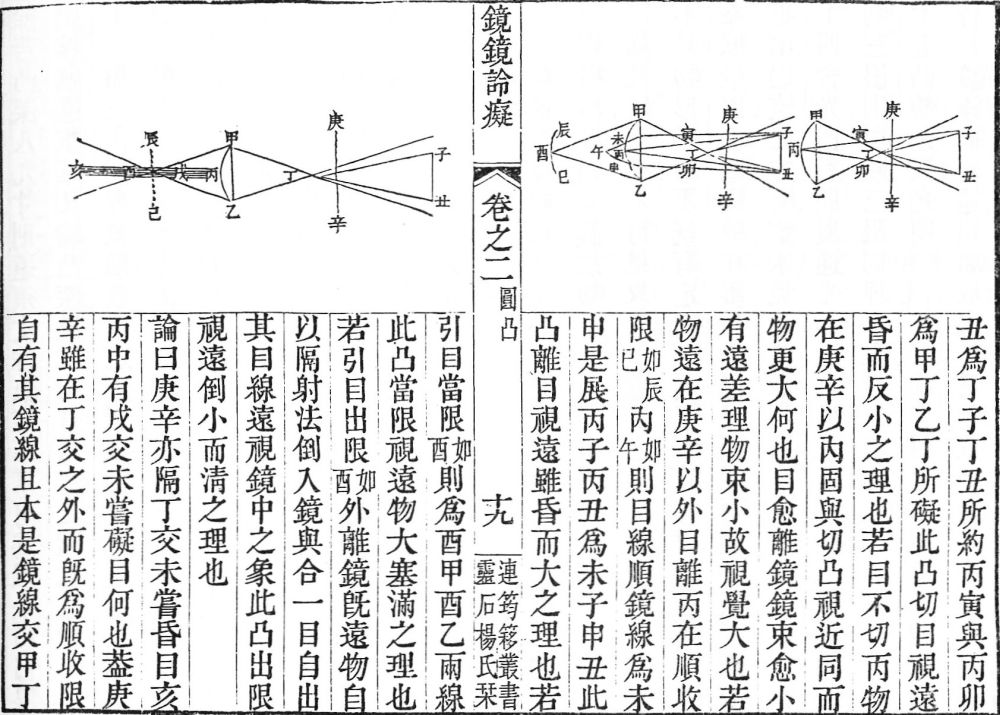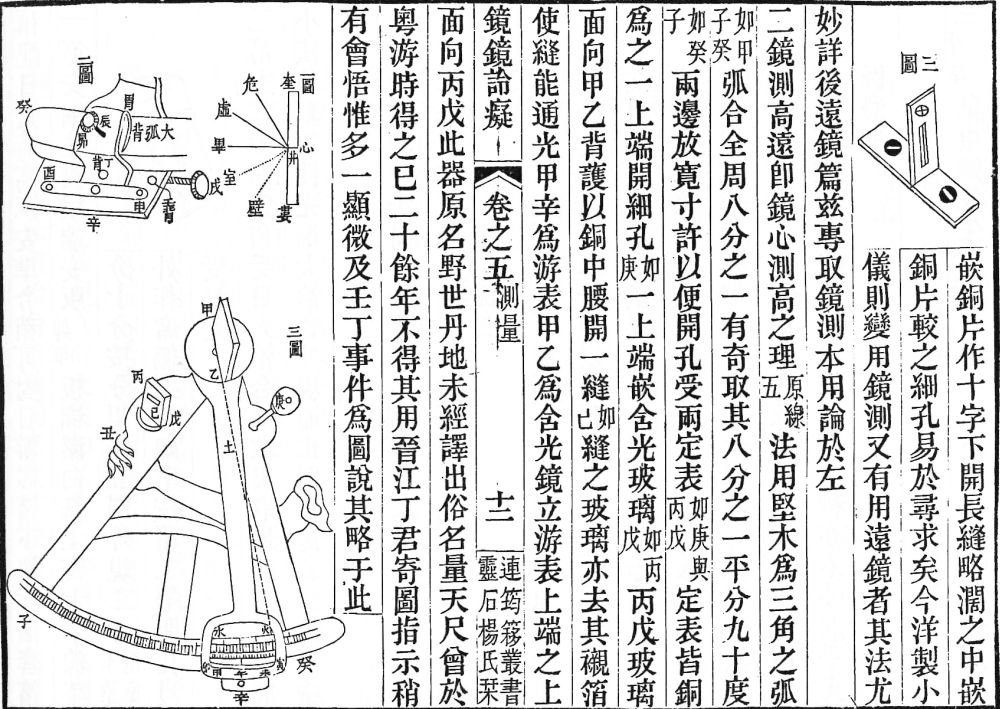Jingjing lingchi 鏡鏡詅癡 "The simpleton's book on optical lenses" is a book on the science of optics written during the late Qing period 清 (1644-1911) by Zheng Fuguang 鄭復光 (1780–1853), who is also the author of the book Feiyin yuzhi lu 費隱與知錄.
The Jingjing lingchi with a length of 5 juan was finished in 1846. It systematically describes all types of lenses used in optical devices and instruments. The illustrations were drawn by Yang Shangwen 楊尚文. Zhang Mu 張穆 added annotations (in the text highlighted with the words jie yue 解曰 "explanation"). The text is divided into four chapters.
The part "Elucidating the principles" (Mingyuan 明原) discusses the basic concepts of geometrical optics, covering topics such as the hues and intensities of colours, the light from luminous bodies, reflected light, shadows and images, types of light rays, illumination rules, the optical mechanism of the human eye, and categories of mirrors. The part presents accurate explanations of the three fundamental laws of geometrical optics: the rectilinear propagation of light, the independent transmission of light, and the reflection of light.
 |
Calculations of optical refractions in half-convex lenses. |
 |
Image of a sextant. |
The chapter "Categorisation of lenses" (Leijing 類鏡) covers the optical properties and quality standards of mirror-making materials such as copper, mercury, tin, glass, crystal, and cellophane, the various uses of coloured mirrors, the optical characteristics of plane mirrors and several types of transparent cylinders. It also includes extensive descriptions of the phenomenon of refraction.
The part "Explanation of curvatures" (Shiyuan 釋圓) discusses the general principles of lens imaging, the imaging characteristics of convex and concave lenses, and the imaging conditions of lenses. It also introduces a series of parameters for some basic optical quantities that determine the characteristics of single lenses and lens groups.
The last chapter, "Details on manufacturing [devices]" (Shuzuo 述作), explains 17 types of optical instruments, encompassing almost all optical devices and tools of the time. Although not all were invented by Zheng Fuguang himself, he conducted in-depth analysis and research on each, providing theoretical explanations, detailed manufacturing methods, usage and maintenance instructions, and comparisons of their strengths and weaknesses. The chapter offers very practical recommendations.
The Jingjing lingchi combines ancient Chinese optical knowledge with knowledge on the science of optics transmitted from the West.
The text is found in the series Lianyunyi congshu 連筠簃叢書 and Congshu jicheng chubian 叢書集成初集. A modern edition, with annotations and translation into modern Chinese by Li Lei 李磊, Jingjing lingchi yizhu 鏡鏡詅痴譯注, was published in 2015 by the Shanghai Guji Press 上海古籍出版社.